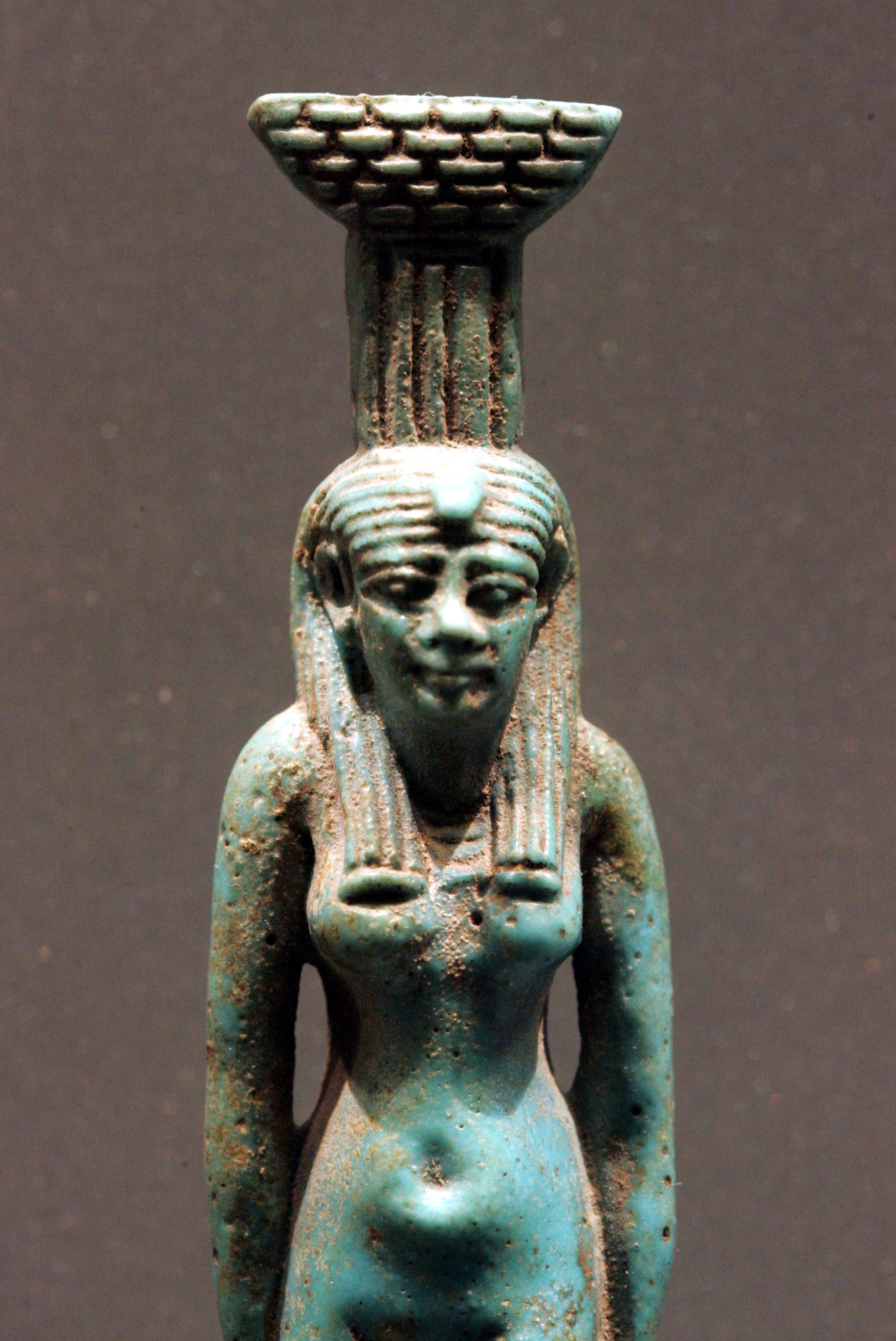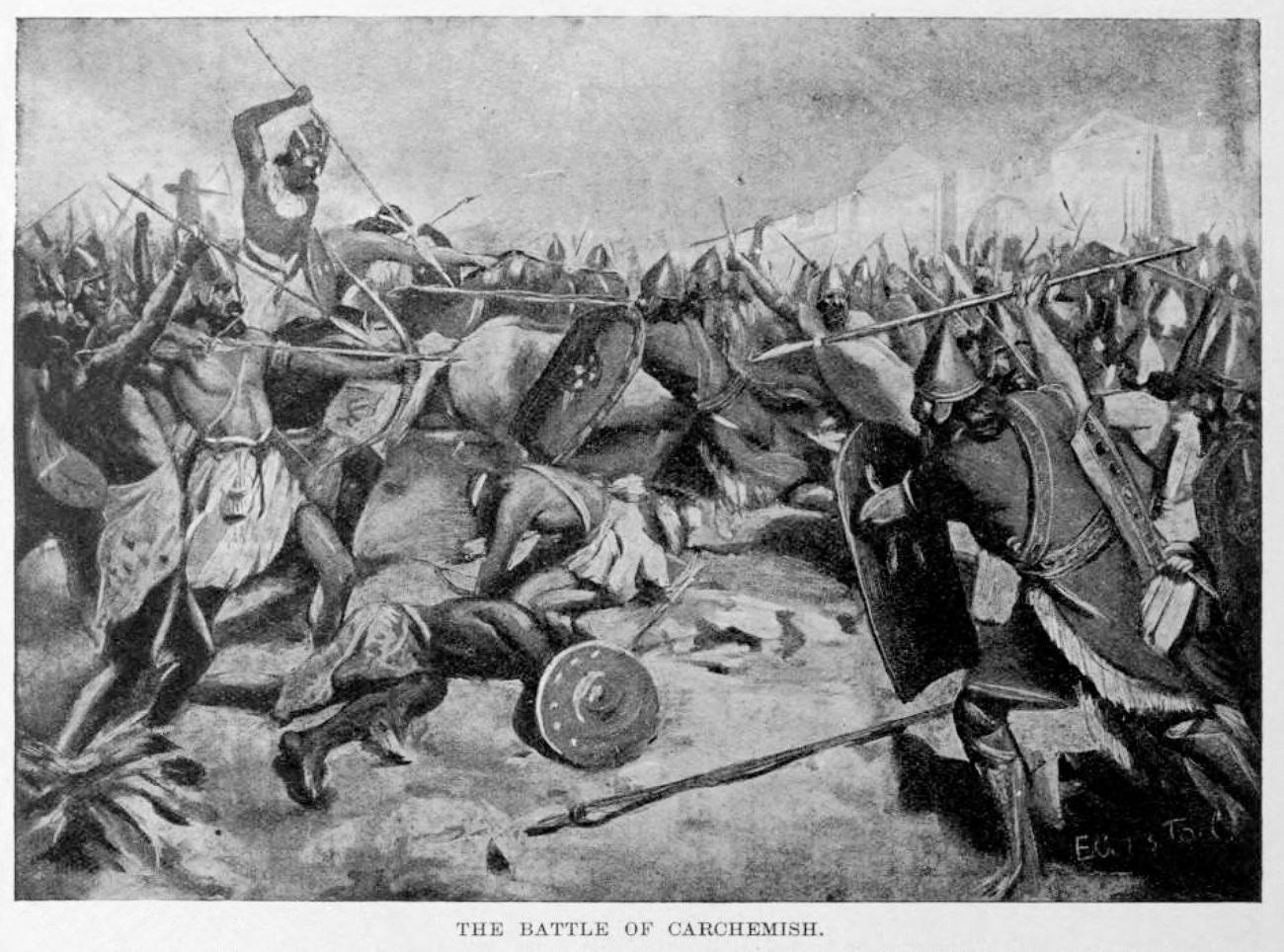|
Festival Songs Of Isis And Nephthys
The Festival Songs of Isis and Nephthys are a work of ancient Egyptian literature whose author is unknown. Probably not older than the Twenty-sixth Dynasty of Egypt, Twenty-sixth Dynasty, the songs form part of the funeral hieratic papyrus of Nesi Ámsu (No. 10158 in the British Museum). The title is “The Verses of the Festival of the two Zerti,” and the papyrus tells us it was to be sung by two virgins in the temple of Osiris on the occasion of the annual festival held for five days in the fourth month of the sowing season. The verses concern the killing of Osiris by Set (mythology), Set, and the later reconstruction of Osiris' body by the goddesses Isis and Nephthys.Dictionary of Egyptian Archaeology - M. Brodick and A.A. Morton There is evidence in the text that other copies existed, and that it was old enough to allow of variant readings having crept in. With the “Litanies of Seker,” which follows, consisting of four columns, it occupies twenty-one of the thirty-three col ... [...More Info...] [...Related Items...] OR: [Wikipedia] [Google] [Baidu] |
Isis
Isis (; ''Ēse''; ; Meroitic: ''Wos'' 'a''or ''Wusa''; Phoenician: 𐤀𐤎, romanized: ʾs) was a major goddess in ancient Egyptian religion whose worship spread throughout the Greco-Roman world. Isis was first mentioned in the Old Kingdom () as one of the main characters of the Osiris myth, in which she resurrects her slain brother and husband, the divine king Osiris, and produces and protects his heir, Horus. She was believed to help the dead enter the afterlife as she had helped Osiris, and she was considered the divine mother of the pharaoh, who was likened to Horus. Her maternal aid was invoked in healing Spell (paranormal), spells to benefit ordinary people. Originally, she played a limited role in royal rituals and temple rites, although she was more prominent in funerary practices and magical texts. She was usually portrayed in art as a human woman wearing a throne-like hieroglyph on her head. During the New Kingdom (), as she took on traits that originally belo ... [...More Info...] [...Related Items...] OR: [Wikipedia] [Google] [Baidu] |
Nephthys
Nephthys or Nebet-Het in ancient Egyptian ( grc-gre, Νέφθυς) was a goddess in ancient Egyptian religion. A member of the Great Ennead of Heliopolis in Egyptian mythology, she was a daughter of Nut and Geb. Nephthys was typically paired with her sister Isis in funerary ritesAbeer El-Shahawbooks.google.co.uk''The funerary art of Ancient Egypt: a bridge to the realm of the hereafter'' (106 pages) American University in Cairo Press, 2005 etrieved 2011-12-12/ref> because of their role as protectors of the mummy and the god Osiris and as the sister-wife of Set. She was associated with mourning, the night/darkness, service (specifically temples), childbirth, the dead, protection, magic, health, embalming, and beer. Etymology Nephthys is the Greek form of an epithet (transliterated as ''Nebet-hut'', ''Nebet-het'', ''Nebt-het'', from Egyptian ''nbt-ḥwt''). The origin of the goddess Nephthys is unclear but the literal translation of her name is usually given as ''Lady of the ... [...More Info...] [...Related Items...] OR: [Wikipedia] [Google] [Baidu] |
Ancient Egyptian Literature
Ancient Egyptian literature was written in the Egyptian language from ancient Egypt's pharaonic period until the end of Roman domination. It represents the oldest corpus of Egyptian literature. Along with Sumerian literature, it is considered the world's earliest literature. Writing in ancient Egypt—both hieroglyphic and hieratic—first appeared in the late 4th millennium BC during the late phase of predynastic Egypt. By the Old Kingdom (26th century BC to 22nd century BC), literary works included funerary texts, epistles and letters, hymns and poems, and commemorative autobiographical texts recounting the careers of prominent administrative officials. It was not until the early Middle Kingdom (21st century BC to 17th century BC) that a narrative Egyptian literature was created. This was a "media revolution" which, according to Richard B. Parkinson, was the result of the rise of an intellectual class of scribes, new cultural sensibilities about individuality, unprece ... [...More Info...] [...Related Items...] OR: [Wikipedia] [Google] [Baidu] |
Twenty-sixth Dynasty Of Egypt
The Twenty-sixth Dynasty of Egypt (notated Dynasty XXVI, alternatively 26th Dynasty or Dynasty 26) dynasty was the last native dynasty to rule Egypt before the Persian conquest in 525 BC (although others followed). The dynasty's reign (664–525 BC) is also called the Saite Period after the city of Sais, where its pharaohs had their capital, and marks the beginning of the Late Period of ancient Egypt.Aidan Dodson, Dyan Hilton. ''The Complete Royal Families of Ancient Egypt''. The American University in Cairo Press, London 2004 History This dynasty traced its origins to the Twenty-fourth Dynasty. Psamtik I was probably a descendant of Bakenranef. Following the Assyrian conquest of Egypt by the Neo-Assyrian Empire during the reigns of Taharqa and Tantamani, and the subsequent collapse of the Twenty-fifth Dynasty of Egypt, Psamtik I was recognized as sole king over all of Egypt. Psamtik formed alliances with King Gyges of Lydia, who sent him mercenaries from Caria and ancient Greec ... [...More Info...] [...Related Items...] OR: [Wikipedia] [Google] [Baidu] |
Hieratic
Hieratic (; grc, ἱερατικά, hieratiká, priestly) is the name given to a cursive writing system used for Ancient Egyptian and the principal script used to write that language from its development in the third millennium BC until the rise of Demotic in the mid-first millennium BC. It was primarily written in ink with a reed pen on papyrus. Etymology In the second century, the term ''hieratic'' was used for the first time to describe this Ancient Egyptian writing system by the Greek scholar Clement of Alexandria. The term derives from the Greek for "priestly writing" ( grc-koi, γράμματα ἱερατικά) because at that time, for more than eight and a half centuries, hieratic had been used traditionally only for religious texts and literature. ''Hieratic'' can also be an adjective meaning " or associated with sacred persons or offices; sacerdotal." Development Hieratic developed as a cursive form of hieroglyphic script in the Naqada III period of Ancient Egypt ... [...More Info...] [...Related Items...] OR: [Wikipedia] [Google] [Baidu] |
Papyrus
Papyrus ( ) is a material similar to thick paper that was used in ancient times as a writing surface. It was made from the pith of the papyrus plant, '' Cyperus papyrus'', a wetland sedge. ''Papyrus'' (plural: ''papyri'') can also refer to a document written on sheets of such material, joined side by side and rolled up into a scroll, an early form of a book. Papyrus is first known to have been used in Egypt (at least as far back as the First Dynasty), as the papyrus plant was once abundant across the Nile Delta. It was also used throughout the Mediterranean region. Apart from a writing material, ancient Egyptians employed papyrus in the construction of other artifacts, such as reed boats, mats, rope, sandals, and baskets. History Papyrus was first manufactured in Egypt as far back as the fourth millennium BCE.H. Idris Bell and T.C. Skeat, 1935"Papyrus and its uses"(British Museum pamphlet). The earliest archaeological evidence of papyrus was excavated in 2012 and 2 ... [...More Info...] [...Related Items...] OR: [Wikipedia] [Google] [Baidu] |
British Museum
The British Museum is a public museum dedicated to human history, art and culture located in the Bloomsbury area of London. Its permanent collection of eight million works is among the largest and most comprehensive in existence. It documents the story of human culture from its beginnings to the present.Among the national museums in London, sculpture and decorative and applied art are in the Victoria and Albert Museum; the British Museum houses earlier art, non-Western art, prints and drawings. The National Gallery holds the national collection of Western European art to about 1900, while art of the 20th century on is at Tate Modern. Tate Britain holds British Art from 1500 onwards. Books, manuscripts and many works on paper are in the British Library. There are significant overlaps between the coverage of the various collections. The British Museum was the first public national museum to cover all fields of knowledge. The museum was established in 1753, largely b ... [...More Info...] [...Related Items...] OR: [Wikipedia] [Google] [Baidu] |
Osiris
Osiris (, from Egyptian ''wsjr'', cop, ⲟⲩⲥⲓⲣⲉ , ; Phoenician: 𐤀𐤎𐤓, romanized: ʾsr) is the god of fertility, agriculture, the afterlife, the dead, resurrection, life, and vegetation in ancient Egyptian religion. He was classically depicted as a green-skinned deity with a pharaoh's beard, partially mummy-wrapped at the legs, wearing a distinctive atef crown, and holding a symbolic crook and flail. He was one of the first to be associated with the mummy wrap. When his brother, Set cut him up into pieces after killing him, Osiris' wife Isis found all the pieces and wrapped his body up, enabling him to return to life. Osiris was widely worshipped until the decline of ancient Egyptian religion during the rise of Christianity in the Roman Empire. Osiris was at times considered the eldest son of the earth god Geb and the sky goddess Nut, as well as being brother and husband of Isis, and brother of Set, Nephthys, and Horus the Elder, with Horus the Younger ... [...More Info...] [...Related Items...] OR: [Wikipedia] [Google] [Baidu] |
Set (mythology)
Set (; Egyptological: ''Sutekh - swtẖ ~ stẖ'' or Greek: Seth ) is a god of deserts, storms, disorder, violence, and foreigners in ancient Egyptian religion. In Ancient Greek, the god's name is given as ''Sēth'' (Σήθ). Set had a positive role where he accompanies Ra on his barque to repel Apep, the serpent of Chaos. Set had a vital role as a reconciled combatant. He was lord of the Red Land, where he was the balance to Horus' role as lord of the Black Land. In the Osiris myth, the most important Egyptian myth, Set is portrayed as the usurper who killed and mutilated his own brother, Osiris. Osiris's sister-wife, Isis, reassembled his corpse and resurrected her dead brother-husband with the help of the goddess Nephthys. The resurrection lasted long enough to conceive his son and heir, Horus. Horus sought revenge upon Set and many of the ancient Egyptian myths describe their conflicts. In ancient Egyptian astronomy, Set was commonly associated with the planet Mercury. ... [...More Info...] [...Related Items...] OR: [Wikipedia] [Google] [Baidu] |
Litanies
Litany, in Christian worship and some forms of Judaic worship, is a form of prayer used in services and processions, and consisting of a number of petitions. The word comes through Latin ''litania'' from Ancient Greek λιτανεία (''litaneía''), which in turn comes from λιτή (''litḗ''), meaning "supplication". Christianity Western Christianity This form of prayer finds its model in Psalm 136: "Praise the Lord, for he is good: for his mercy endures for ever. Praise ye the God of gods . . . the Lord of lords . . . Who alone doth great wonders . . . Who made the heavens", etc., with the concluding words in each verse, "for his mercy endures for ever." The Litany originated in Antioch in the fourth century and from there was taken to Constantinople and through it to the rest of the East...From Constantinople the Litany was taken to Rome and the West. Josef Andreas Jungmann explains how the ''Kyrie'' in the Roman Mass is best seen as a vestige of a litany at the beginn ... [...More Info...] [...Related Items...] OR: [Wikipedia] [Google] [Baidu] |









